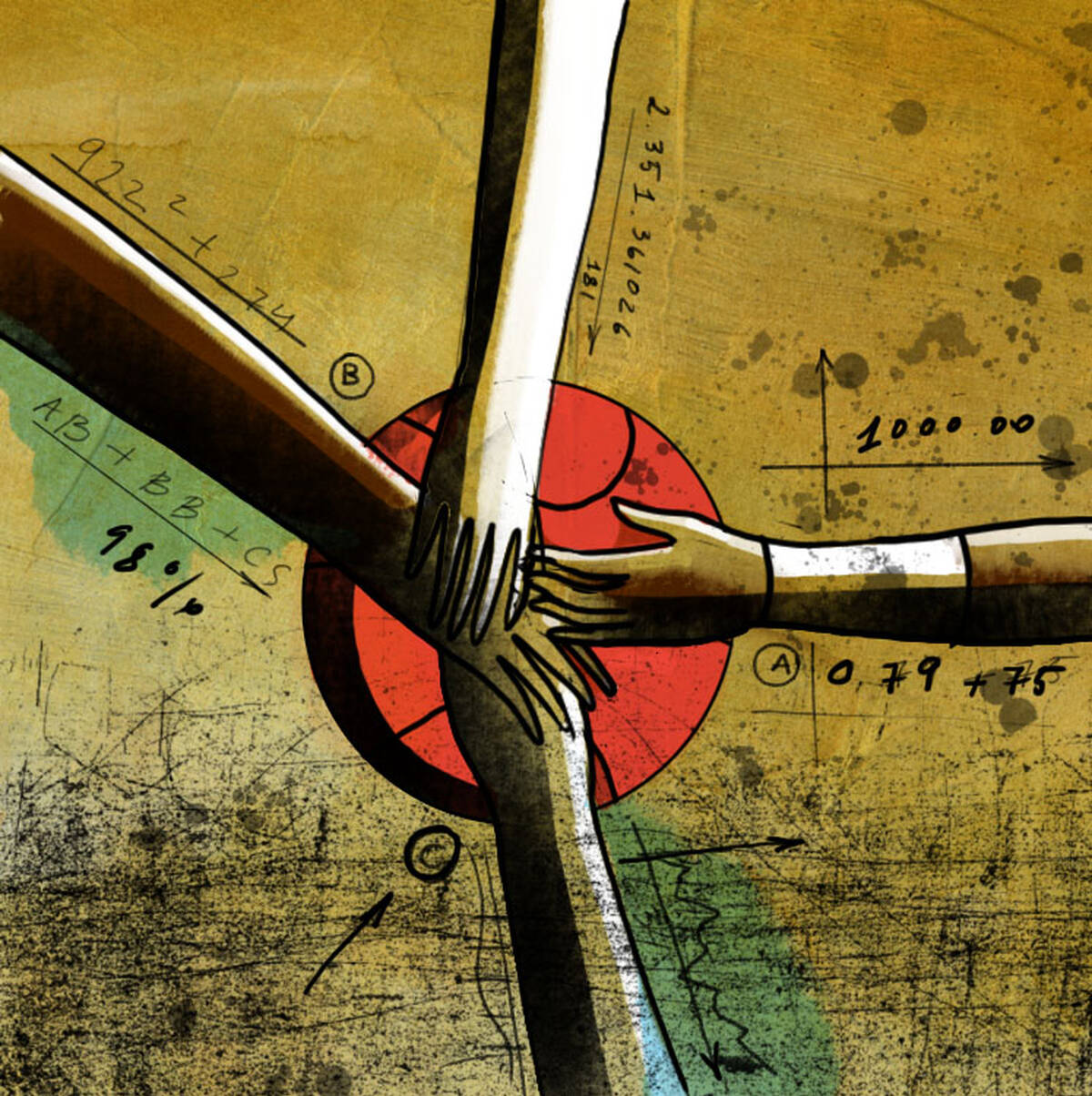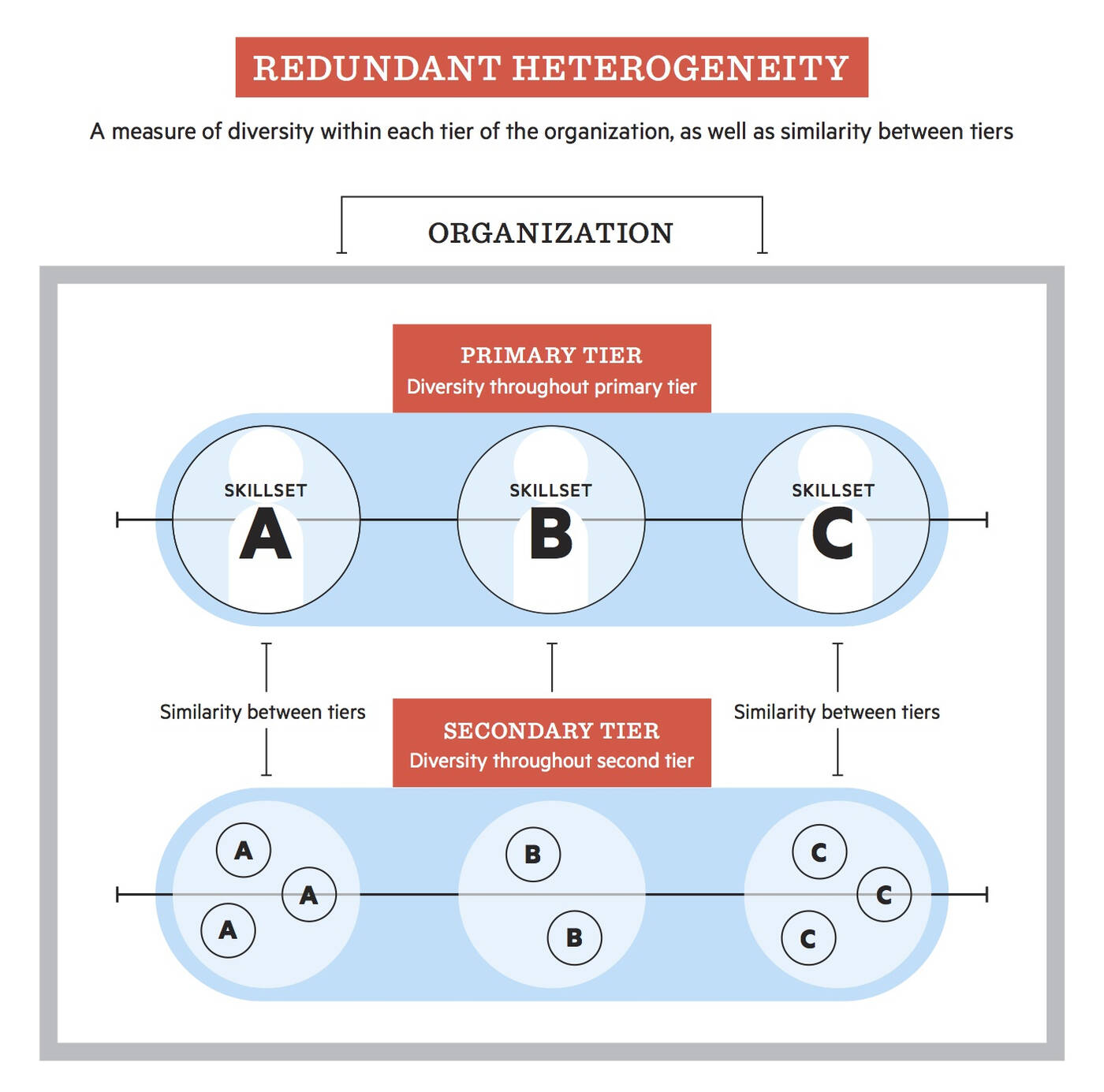Featured Faculty
Associate Professor of Management & Organizations (2013-2021); Associate Professor of Sociology, Weinberg College of Arts & Sciences (Courtesy)

Yevgenia Nayberg
From business to academia to sports, how to build effective teams is a crucial question. What organizing principles best enhance individuals’ performance and are most conducive to creativity?
One popular theory holds that diversity is key. Assemble a heterogeneous group of people, and, as Ned Smith puts it, “some magic happens because those people will begin to recombine their knowledge and skillsets in unique ways.” It’s a nice story, says Smith, an associate professor of management and organizations at the Kellogg School.
The problem, though, is that it is not entirely true. Research from a variety of disciplines shows that teams and organizations composed of diverse people often perform poorly.
“We had an intuition that you wanted in some way to balance diversity and similarity.”
There are at least three main reasons for this. First, heterogeneity often erodes over time. The more team members interact, the more alike they become. Then there is the problem of fragility. Teams that truly benefit from their diversity are also highly dependent on each element of that diversity. Should one person leave, the “magic” may leave, too. Finally, a lack of common ground can cause fragmentation into homogenous subsets, where similar people in the group seek each other out, and conflicts between team members can arise. Ultimately, the whole group can break down.
So how can organizations benefit from diversity without being dragged down by its inherent handicaps? “We had an intuition that you wanted in some way to balance diversity and similarity,” Smith says. “Too much diversity can undermine itself, but too little diversity and you’re not likely to get any unique viewpoints. There’s no novelty.”
In his research, which uses data from the National Basketball Association, he demonstrates a solution that gets at this sweet spot between diversity and similarity.
Smith and Yuan Hou of the University of Pennsylvania propose an idea called redundant heterogeneity (RH).
Imagine an organization made up of two tiers of workers—e.g., law-firm partners and associates, attending physicians and residents, top- and middle-level management—with three people each. If the top tier includes people with skill sets A, B, and C, then redundant heterogeneity would mean the second tier would include people with those same three skill sets. That way, the organization presents both diversity within a tier and similarity between tiers, thus the term redundant heterogeneity

Smith and Hou arrived at the idea of RH after studying data from the NBA, which provides a compelling context for understanding how people with unique skill sets can work together effectively.
“In many traditional organizations, the number of dimensions on which people can be different becomes a bit unwieldy,” Smith says. But in the NBA, everyone is the same gender and roughly the same age, and many players come from similar backgrounds. This meant the researchers could focus their attention on one specific aspect of diversity: the college conference that NBA players were part of before entering the league.
The researchers analyzed NBA data from 1986 through 2008 (excluding the 1998 season cut short by labor negotiations), using players’ college conferences to construct measures of diversity. The thinking, corroborated by college coaches with whom the researchers consulted, is that different conferences—say, the Big Ten versus Pac Ten—have different styles of play. For example, the ACC is known for its pressure defense and the Big East is known for its physicality.
The authors argue that even if an individual player does not adopt the playing style associated with his conference, his experience playing in the conference allows him to develop a knowledge base consistent with that style. The authors confirmed this effect by analyzing the difference between players who spent shorter and longer amounts of time (typically one to four years) playing college basketball before joining the NBA.
Smith and Hou found that having core players with a large amount of diversity in terms of college conferences yielded positive results—but having too much diversity among the team as a whole was detrimental.
So where is the sweet spot? Ultimately, they arrived at the idea of redundant heterogeneity. Teams are at an advantage when both the lineup of core players and of secondary players has the same “profile of heterogeneity”—meaning each tier has players from different conferences, but the same combination of conferences are represented at both levels.
(To see how redundant heterogeneity might help your favorite teams, check out our interactive infographic here.)
In analyzing the concept further, Smith and Hou discovered that redundant heterogeneity solved all three of the main problems that too much diversity can create. First, they found that while diverse teams can fall apart if an important player leaves, those with redundancy fared much better. This holds true even if those two players—the departing top-tier player and the second-tier one from the same college conference—play different positions.
Next, they discovered that teams with the redundant structure avoid the problem of diversity eroding over time. The positive effect of diversity among core players tends to erode after about four and a half seasons together—except in the teams that have RH. Without redundancy, “people can forget or begin to not think about their own unique skills and focus on things they have in common,” Smith explains. With RH, “we think when teams have redundant personnel, it allows people to remember and preserve their uniqueness.”
Finally, they found that teams with redundant heterogeneity played better together—that this structure preserved rather than undermined team cohesion. The researchers were able to identify an optimal team composition that combined diversity at the top level with redundancy between levels. This led to a 10.7 percent increase in the number of games won during a season—or 4.4 additional wins for the average team. “In a sport where one game can lead to a team advancing to the playoffs, with a chance to compete for the championship,” they wrote, “these team-composition effects are significant, statistically and practically.”
The research has implications beyond just sports. By building teams and work groups according to the principles of redundant heterogeneity, all sorts of businesses and organizations might be able to reap the benefits of diversity without suffering from its potential negative impacts. In the meantime, though, at least one NBA general manager is interested in meeting with Smith.
Smith, Edward (Ned), and Yuan Hou. “Redundant Heterogeneity and Group Performance.” Organization Science. In press.